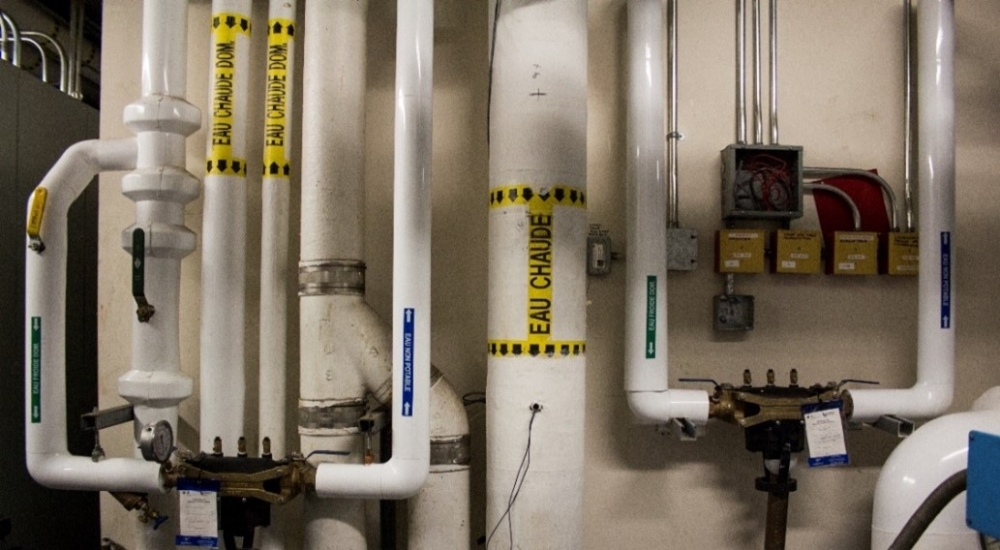
Often, people confuse a backflow prevention device with check valve, which prevents the backflow of wastewater into the house’s basement. This is quite normal since it is a very common application in residential buildings. A backflow prevention device also protects against backflow, that is, a reversal of the direction of water flow, but in the building’s drinking water distribution network.
For drinking water, also known as water suitable for human consumption, to be contaminated, a backflow must therefore occur. A backflow prevention device is a mechanical device that is activated in the presence of a backflow. Its internal components, including the check valves, restrict potentially contaminated water in specific pipes, thus preventing contact with drinking water. Backflow prevention devices must be installed at strategic locations on the drinking water distribution system, where there are risky cross-connections.
There is a wide variety of backflow prevention devices, all designed to meet specific needs. Some devices are said to be "verifiable" because their good working condition must be tested annually by a certified backflow prevention device verifier. Others, however, do not require annual certification as defined by law, but it is recommended that they undergo a periodic visual examination.
Only an expert who is familiar with CSA B64.10-17 – Selection and installation of backflow prevention devices, can select the appropriate backflow prevention device and identify the risk areas on the drinking water distribution system where such a device must be installed. This is called cross-connection engineering.
Thanks to the backflow prevention devices, you can drink the water from the fountain with peace of mind. For example, Sainte-Justine Hospital faced a drinking water crisis in January 2016, after finding particles in its drinking water. Fortunately, these turned out to be non-toxic...
Contact our experts for an engineering analysis of cross-connections or specific training.